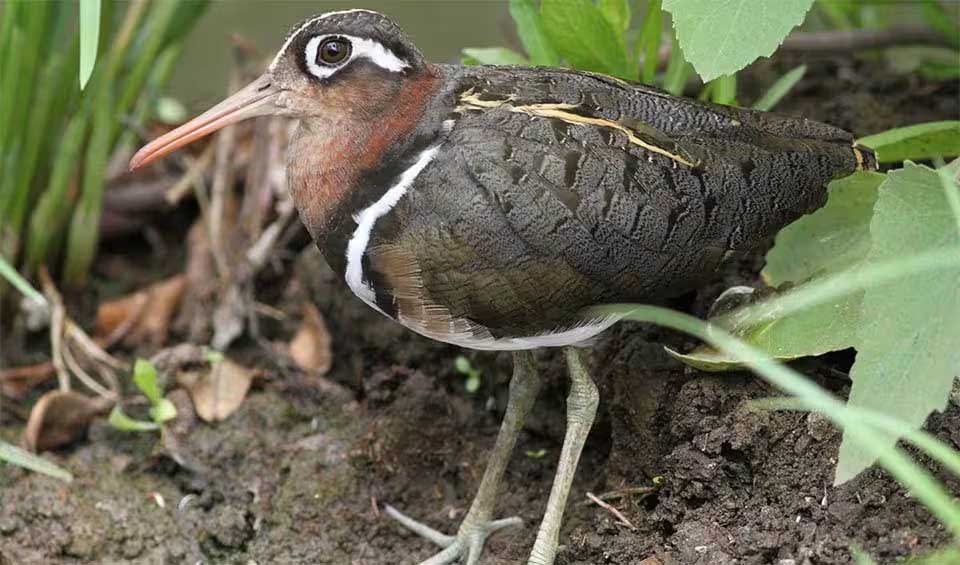Rostratula
The two species of painted snipe have successfully survived the climate crisis but shouldn't be taken for granted
These birds showcase some of the most compelling examples of sexual dimorphism and ornate plumage in the bird world. These species are notable for their distinctive physical characteristics and behaviors, which differ markedly between the sexes.
The Greater Painted-snipe, distributed across Africa, Asia, and parts of Oceania, is well-known for its role reversal, where the more vibrantly colored female is larger and more dominant than the male. Her plumage is a dazzling array of colors, with a reddish-brown head beautifully contrasting with her greenish-tinged back and wings. The male, in contrast, exhibits more muted tones designed to blend into the marshy environments they inhabit. This cryptic coloration serves as camouflage, helping to keep him hidden while he performs the majority of the incubation duties and cares for the young.
Both sexes possess a distinctive comma-shaped eye mask, a feature that is prominent across species in this genus. The coloration of this mask varies and serves as a means of differentiating between species and sexes, playing a role in mate recognition and territorial disputes.
The Australian painted snipe, which is considered endangered, is endemic to Australia and is distinguished by its bold-colored plumage. This species also demonstrates the unusual trait of a slightly decurved bill, which is perfectly adapted to foraging in soft mud for invertebrates and seeds. Their feet, ranging in color from yellowish-olive to greyish-olive, are suited to their semi-aquatic lifestyle, allowing them to walk on soft ground near water bodies.
One of the most striking behaviors of painted-snipes is their courtship display, which involves eloquent and almost choreographed movements that are accentuated when they spread their wings. The underside of their wings reveals intricate and artistic patterns that are normally hidden, contributing to the elaborate visual spectacle of their mating rituals.
Painted-snipes prefer wetland habitats where they can use their long bills to probe for food. They are generally shy and elusive birds, making them a rare sight for birdwatchers. Their habitats are often at risk due to human activities such as agriculture, drainage, and urban development. As a result, the conservation of these birds is closely tied to the protection and restoration of wetlands.
Species in this genus
Greater painted-snipe
Looks no less than a renaissance masterpiece


